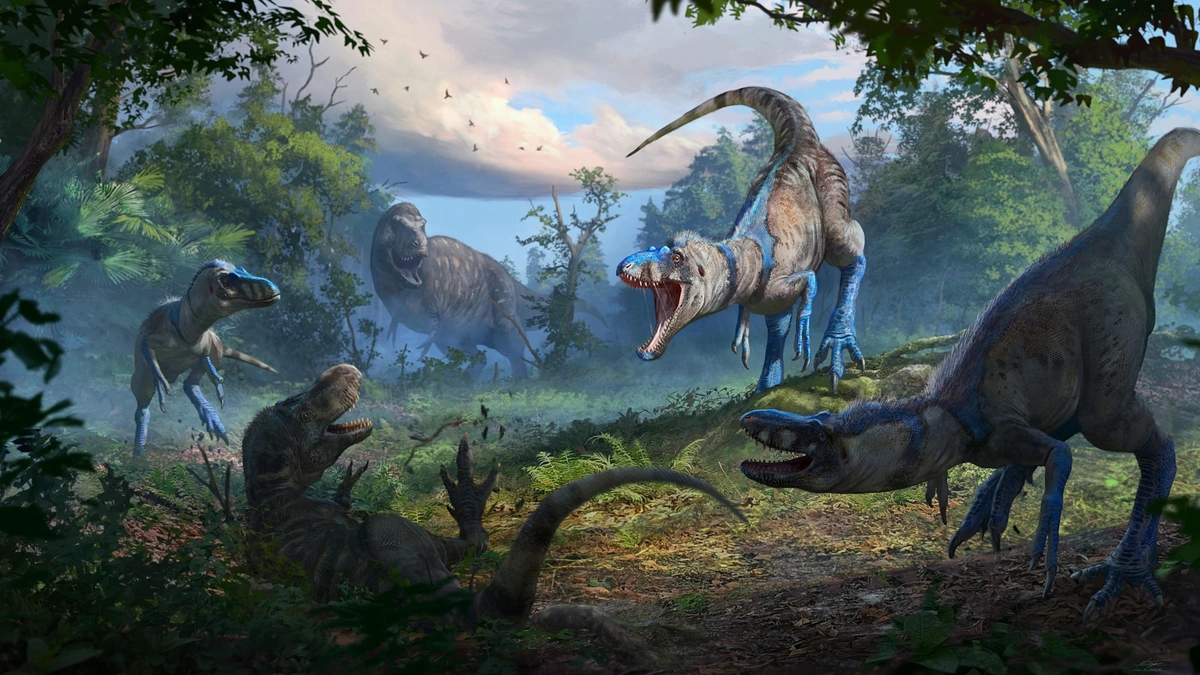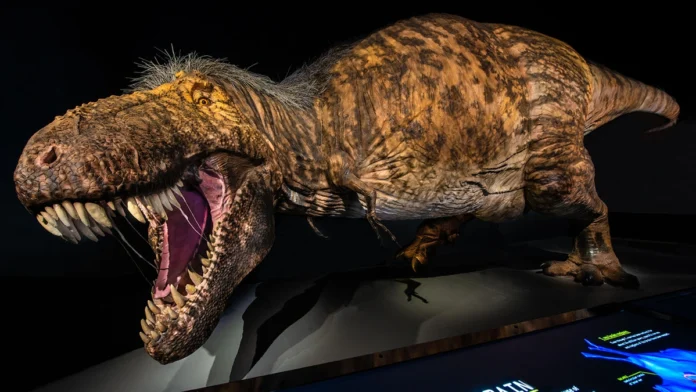Alright, dinosaur enthusiasts, gather ’round! We’ve got a fresh batch of dino-drama brewing in the paleontology world. New bone discoveries are stirring up the age-old debate: Were those smaller Tyrannosaurus rex skeletons actually young versions of the king, or were they a completely different, smaller species altogether? What fascinates me is how much we still don’t know about these ancient giants.
The Heart of the Debate | Nanotyrannus or Juvenile T. rex?

For years, scientists have argued about whether smaller, slender tyrannosaurid fossils represent a separate genus called Nanotyrannus, or if they’re just younger versions of the T. rex growth we all know and fear. The latest findings, published in a recent study, add fuel to this fiery debate. It’s not just about semantics; it’s about understanding dinosaur growth patterns and the incredible changes these creatures underwent as they matured. Click here to read more.
But, here’s the thing: these aren’t just any bones. These are bones that show unique characteristics, leading some researchers to believe they’re looking at something entirely different from your average juvenile tyrannosaurid . According to a paper on a paleontology blog (Wikipedia), distinguishing between juvenile and adult forms is tricky, especially with incomplete skeletons. So, what makes these new bones so special?
Evidence for Two Separate Species
The proponents of the Nanotyrannus hypothesis point to several key differences. These include:
- More teeth: Nanotyrannus fossils typically have more teeth than adult T. rex specimens.
- Slender build: They have a lighter, more agile build compared to the robust, bone-crushing T. rex.
- Different skull features: The skull structure shows variations that some argue are too significant to be attributed to age alone.
Now, let’s be honest interpreting fossil evidence is like reading tea leaves. You’re trying to piece together a complete picture from fragmented remains. These distinctions could indicate a distinct hunting style, diet, and ecological niche. Imagine a sleek, speedy predator existing alongside the more heavily built Tyrannosaurus rex it’s a paleontological puzzle that keeps researchers up at night.
The Case for Juvenile T. rex
On the other side, many paleontologists argue that these so-called Nanotyrannus specimens are simply younger T. rex individuals. They point to bone histology (the study of bone tissue) and growth modeling as evidence that these smaller dinosaurs were still growing and changing. A common mistake I see people make is assuming that dinosaurs reached their adult form quickly. But, like many animals, they went through significant developmental stages.
And, the changes we see in the fossils could simply represent these developmental changes. Think of it like a human teenager they look quite different from both a child and an adult. Plus, as per research at the Natural History Museum, some studies have shown that the tooth count decreases as T. rex ages, supporting the juvenile hypothesis.
So, what does this mean for our understanding of dinosaur identity? Well, it means the story is far from over. The debate highlights the complexities of paleontology and the challenges of interpreting the fossil record.
Why Does It Matter? The Bigger Picture
You might be thinking, “Okay, so what if it’s a young T. rex or a separate species? Why should I care?” Well, it’s not just about classifying dinosaurs. It’s about understanding the ecosystems they lived in. Were there multiple apex predators competing for resources? How did T. rex evolve and change over time? Understanding the relationship between these fossils helps us paint a more complete picture of the Late Cretaceous period.
But more than that, this debate shows us how science works. It’s a process of questioning, testing, and revising our understanding based on new evidence. I initially thought this was straightforward, but then I realized how much interpretation is involved. Paleontology isn’t just about digging up bones; it’s about telling a story a story that’s constantly being rewritten as we discover more.
The Future of the Debate
As technology advances, scientists are using new tools to analyze these fossils. Things like CT scanning, advanced imaging techniques, and detailed bone analysis are providing new insights into the growth and development of these dinosaurs. Let me rephrase that for clarity: The more data we gather, the closer we get to solving this mystery.
The one thing you absolutely must double-check is the source of your information. Stick to reputable scientific journals and museums for the most accurate and up-to-date findings. The next time you see a T. rex skeleton, remember that there’s more to the story than meets the eye. It’s a story of scientific debate, discovery, and the ongoing quest to understand the incredible history of life on Earth. And, who knows? Maybe you’ll be the one to uncover the next piece of the puzzle! As this science article from BBC says, there is still so much more to learn about dinosaurs.
FAQ Section
What’s the big deal about Nanotyrannus?
Nanotyrannus is the name given to some smaller tyrannosaurid fossils. The debate is whether these are a separate, smaller species or just juvenile T. rex specimens.
How do scientists tell if a dinosaur is young or old?
Scientists use bone histology (examining bone tissue under a microscope) to determine the age and growth rate of dinosaurs.
What kind of bones spark debate?
Fossils that are smaller, show different tooth counts, or have unique skull features often spark debate among paleontologists.
What if I want to become a paleontologist?
Study hard, focus on science and math, and get involved in fieldwork or museum programs. Start by following leading paleontologists and institutions on social media!

